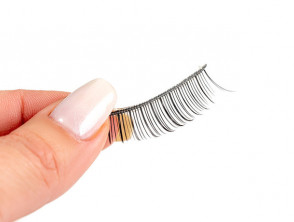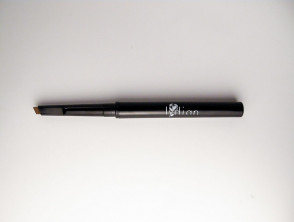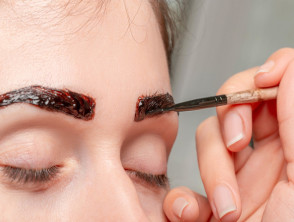What are false eyelashes and eyebrows?
False eyelashes and eyebrows are products used to enhance or replace natural lashes and brows. Approaches include the use of pencils, tattoos, strips of false eyelashes or eyebrows, and individual lash extensions.
Examples of false eyelashes and eyebrows
Who uses false eyelashes and eyebrows?
False eyelashes and eyebrows are very popular amongst the general public to enhance appearances but can also be a very valuable resource for individuals with alopecia and hair loss. For example, in trichotillomania, where the individual has a compulsion to pull their hair out, false eyelashes may be useful to disguise this. [1]
What are the contraindications with false eyelashes and eyebrows?
There are no strict contraindications for the use of false eyelashes and eyebrows, however obvious situations where avoidance is advisable to include previous allergic reactions to eyelash glue. For example, some glues used contain latex, therefore individuals with a sensitivity to latex should find an alternative product [2]. Case reports of allergic contact dermatitis have also been noted with acrylate-containing glue used for false eyelashes [3]. Furthermore, eyelash and eyebrow tinting products may contain compounds that cause allergic or irritant dermatitis similar to reactions seen with hair dyes. Individuals who have previously experienced reactions to these allergens should, therefore, avoid using products containing them.
It is also advisable to temporarily avoid false eyelashes during eye infections like conjunctivitis and styes (hordeolum) to limit irritation and the spread of infection.
For eyebrow microblading, technicians advise that individuals prone to keloid scarring avoid microblading entirely. This is because the technique involves making multiple small cuts to the skin, therefore risking the development of keloids.
Tell me more about false eyelashes and eyebrows
Listed below are some of the various options available to individuals who want to enhance or replace their eyebrows and eyelashes [4].
Eyebrows
- Pencil — good if an individual doesn’t have their own hairs, advised choosing a shade that matches hair/wig. Experts also recommend opting for a lighter shade rather than darker for the most natural look.
- Powder — best used to fill in gaps, once again this should be matched to an individual’s skin tone and hair colour.
- Permanent makeup — tattoos or microblading (small cuts to the skin which are filled with pigment). This tends to need refreshing every year and can be expensive £200–400.
- Real or synthetic hair — replacement eyebrows fashioned from hair can be applied with an adhesive backing or with glue (similar to that used in false eyelashes). Real hair tends to be more expensive than synthetic alternatives.
Eyelashes
- False eyelashes can come in various forms; individuals, clusters or strips of lashes.
- They can also be made from synthetic or real hair.
- Single-use false eyelash products can be applied by the individual whereas eyelash extension needs to be applied by a professional beautician/ aesthetician.
- Eyelash extensions tend to last between a few weeks to months if cared for correctly.
What are the benefits of false eyelashes and eyebrows?
The benefit of false eyelashes and eyebrows is that they can enhance or replace an individual’s features, which as a result, can help a person feel more confident.
What are the disadvantages of false eyelashes and eyebrows?
As is the case with any cosmetic procedure or product, false eyelashes, and eyebrows cost money. This cost can be quite considerable, for example, microblading can cost upwards of £200 (NZ$400).
Another disadvantage of false eyebrows is that the tattoos often fade and require repeat sessions to maintain the effect.
Finally, depending on the product used, false eyelashes and eyebrows may not be suitable for every activity for example exercise and swimming. Individuals who use these products may feel the need to limit their activity to preserve the effect or prevent false eyelashes falling off.
What are the side effects and risks of false eyelashes and eyebrows?
Complications associated with the use of false eyelashes include [5]:
- Keratoconjunctivitis — irritation of the outer eye (conjunctiva and cornea) by the glues used to secure false eyelashes or products used to remove them
- Allergic blepharitis — inflammation of the eyelids due to contact with an allergen (most commonly the glue used for eyelash extensions).
- Traction alopecia — loss of an individual’s own eyelashes as a result of the added tension placed on the hair-shaft by applying and removing false eyelashes
There is also a risk of infection, although to a lesser extent, with eyebrow microblading as small cuts are made to the skin in order to apply the pigment. It is also possible to develop an allergic reaction to the pigment/dye used. Otherwise, eyebrow products, such as pencils and powders, carry minimal risk.


